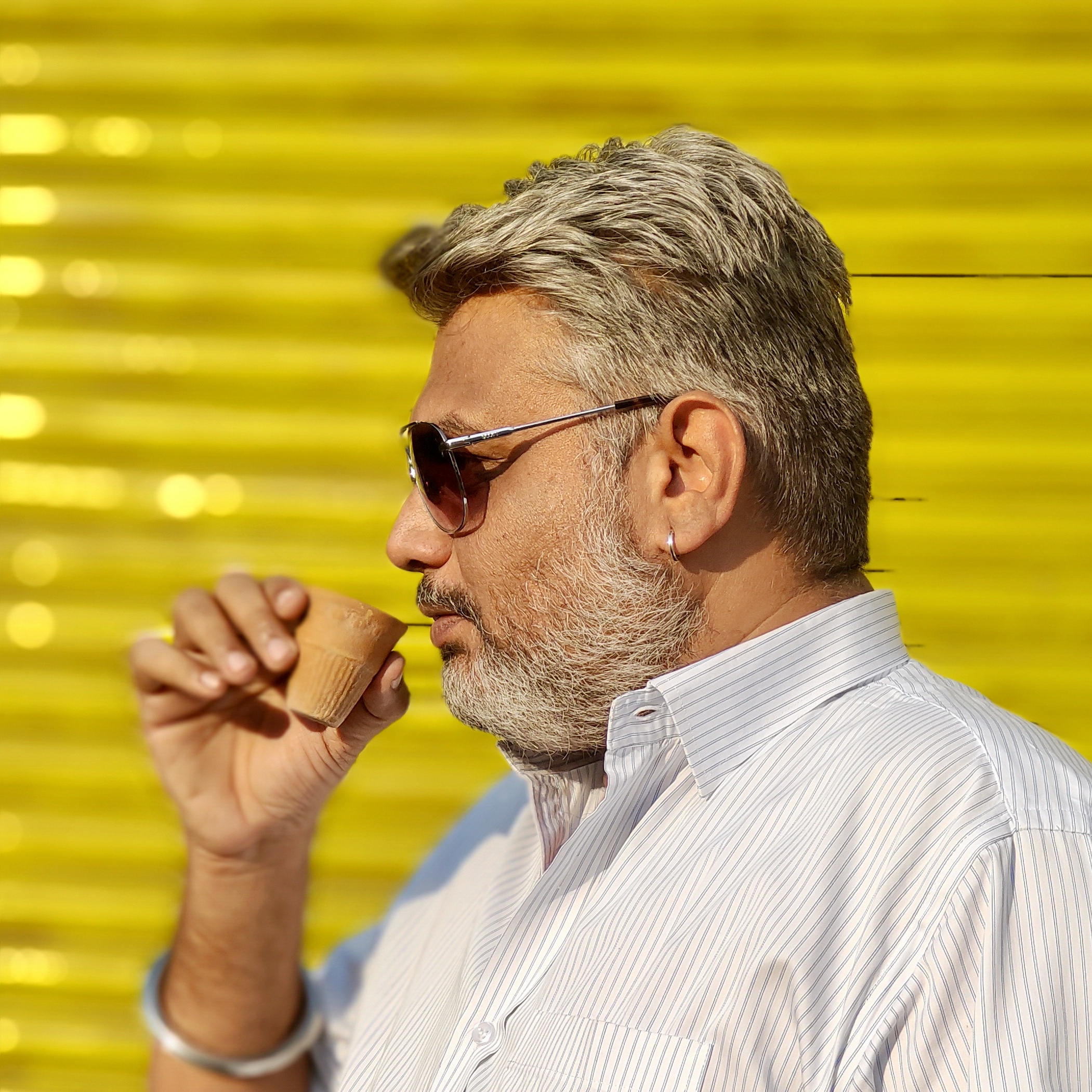Sameer Gudhate Presents the Book Review of Tumhari Auqat Kya Hai by Piyush Mishra
- Sameer Gudhate
- 27 minutes ago
- 4 min read

I still remember the first time I heard Piyush Mishra live—his words flowing like a river that refuses to be dammed, each syllable carrying the weight of years, pain, joy, and unrestrained passion. The air itself seemed to hum with his energy, each note and gesture leaving invisible ripples that lingered long after the applause. Holding Tumhari Auqat Kya Hai now, I realize reading this book is like stepping into that same river—letting yourself be carried along, immersed completely, and emerging on the other side with a sense of having lived each moment alongside him.
Piyush Mishra, a man whose name resonates with theatre, cinema, and music, wears many hats: actor, poet, lyricist, singer, playwright. Yet here, in this autobiographical novel, he steps out from behind every performance and every song to meet the reader face-to-face. And he doesn’t merely narrate; he paints with words. The book is structured like a novel, yet every scene, every dialogue, every fragment feels like an honest sketch of life lived fully, at times painfully, always sincerely. He writes in Hindi, his mother tongue, giving the narrative a warmth and intimacy that would have been diluted in English. There is an undeniable freshness here—language that feels alive, effortless, youthful, yet profoundly reflective.
The story—or perhaps the experience—follows Santap Trivedi, alias Hamlet, Mishra’s thinly veiled alter ego, through childhood in Gwalior, the grinding years in Delhi’s theatre circles, and the labyrinthine alleys of Mumbai’s film industry. But what makes the journey so compelling isn’t merely the chronology of his life; it’s the emotional resonance. Santap wrestles with fear, frustration, aspiration, and self-doubt, the kind that gnaws silently beneath the surface for years. There is a moment when Hamlet confronts the very inertia of his own despair, and you can feel the weight of it—the longing, the panic, the sheer human tenacity to rise anyway. Mishra’s storytelling captures that tension exquisitely, drawing you so close that the triumphs and stumbles feel like your own.
The prose itself is a revelation. There is rhythm, almost musicality, to every paragraph. It flows in a way that is both lyrical and conversational, sometimes playful, sometimes deeply meditative. You can hear Mishra’s voice in the cadences, feel the gestural energy of his storytelling. Even the smallest character—whether a mentor, a colleague, or a fleeting stranger—carries a distinctive vibrancy. By the end, these once-obscure figures feel intimately familiar, as if you had met them over countless cups of chai in quiet cafés, discussing life, art, and mischief.
Structurally, the book balances between a flowing narrative and episodic reflections, capturing both the rhythm of Mishra’s life and the unpredictability of his journey. It’s not a chronicle of unbroken success; it’s a tapestry of struggle, failure, small victories, and relentless self-inquiry. And through it all, Mishra’s humanity is luminous. You feel the weight of his fears, the subtle arrogance of youthful certainty, the tenderness of relationships nurtured and tested. He writes candidly about mistakes, insecurities, and even the shadows of indulgence and impulsivity, but never self-indulgently—always with a reflective eye, a probing question to the self and the world.
Themes of resilience, integrity, and creative perseverance ripple through every page. You are reminded that talent alone is never enough; that life tests both will and character; and that real artistry often emerges from navigating pain, fear, and societal expectations. One line, describing Hamlet’s confrontation with internalized doubts, stayed with me long after I closed the book: the struggle is never over, but neither is the courage to continue.
If there is a weakness, it is minor—a few sections linger in introspection just a beat longer than necessary—but in truth, those pauses mirror life itself: reflective, uneven, real. It’s a strength masquerading as a flaw. The book excels in connecting you to Mishra as a human being, not merely a celebrated actor or musician. By the final chapter, you are left with the curious sensation of having shared tea and stories with a friend who has lived deeply, thought honestly, and expressed with exquisite care.
For anyone who loves stories of resilience, art, and life’s messy brilliance, this is a book to treasure. For aspiring artists, it is a masterclass in humility and grit. For readers who simply love a narrative that feels like music and theater in words, it is irresistible. And for those who have ever felt the silent weight of self-doubt or the intoxicating thrill of creative passion, it is profoundly relatable.
I returned to Piyush Mishra’s songs after finishing the book—“Husna,” “Ik Bagal Mein Chand Hoga,” each note now resonating with deeper layers of understanding. Reading this autobiography is not just reading; it’s feeling, reflecting, and emerging with a renewed appreciation for the artist and the human. Tumhari Auqat Kya Hai Piyush Mishra is not just a book—it is a journey through a life, a celebration of courage, and an invitation to witness art in its rawest, most honest form. Pick it up, read it slowly, savor it, and let it echo in your own life.
#PiyushMishra #Autobiography #TumhariAuqatKyaHai #IndianAuthors #TheatreAndCinema #LifeOfAnArtist #HindiLiterature #ActorLife #InspiringReads #BooksThatStayWithYou #SameerGudhate #thebookreviewman







Comments